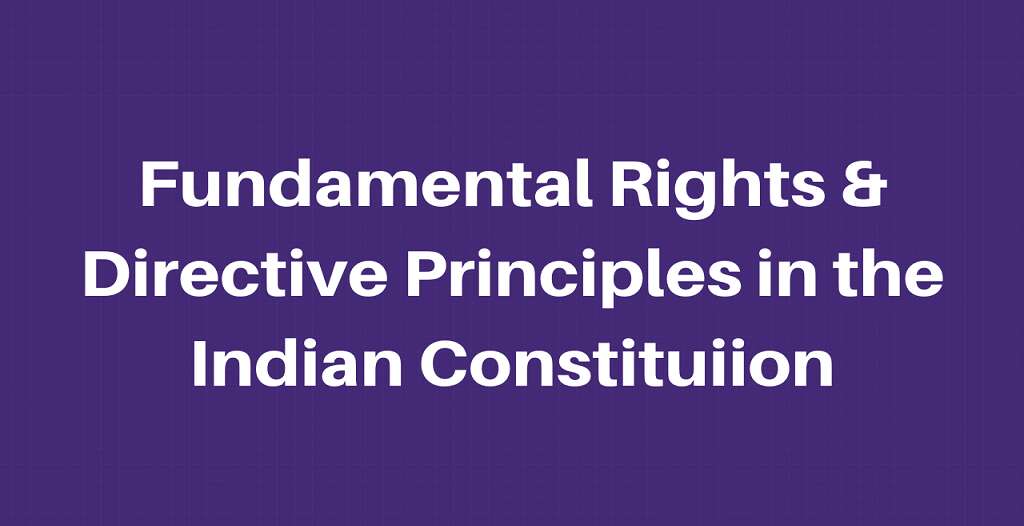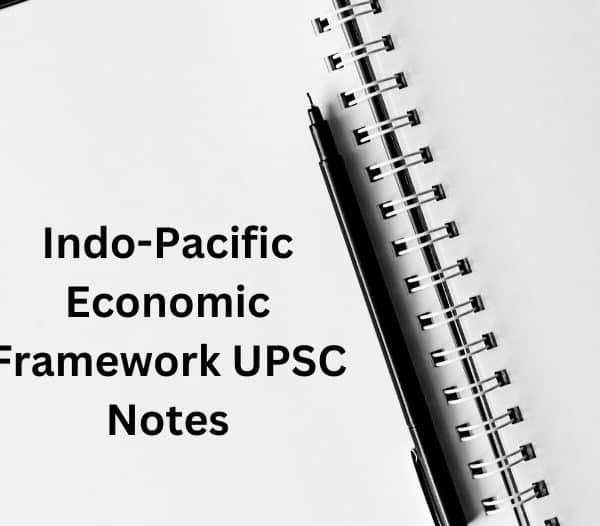On 1949, 26th November, the constitution of India was passed by the Constituent Assembly; on 26th January 1950, it came into effect. Indian Constitution had 395 articles in 22 parts and 8 schedules at the time of commencement in the year 1950. Currently, the Constitution of India comprises 470 articles in 25 parts, 12 schedules and 5 appendices. There are 104 amendments have been made in the Indian constitution till the date.
How Many Parts are There in the Indian Constitution? What are Those?
|
Parts in the Constitution of India |
Subject Matter |
Total Articles Covered |
|
I |
The Union and its territory |
1 to 4 |
|
II |
Citizenship |
5 to 11 |
|
III |
Fundamental Rights |
12 to 35 |
|
IV |
Directive Principles of State Policy |
36 to 51 |
|
IV-A |
Fundamental Duties |
51-A |
|
V |
The Union Government |
52 to 151 |
|
VI |
The State Governments |
152 to 237 |
|
VIII |
The Union Territories |
239 to 242 |
|
IX |
The Panchayats |
243 to 243 O |
|
IX-A |
The Municipalities |
243-P to 243-ZG |
|
IX-B |
The Co-operative Societies |
243-ZH to 243-ZT |
|
X |
The Scheduled and Tribal Areas |
244 to 244-A |
|
XI |
Relations between the Union and the States |
245 to 263 |
|
XII |
Finance, Property, Contracts and Suits |
264 to 300-A |
|
XIII |
Trade, Commerce and Intercourse within the Territory of India |
301 to 307 |
|
XIV |
Services under the Union and the States |
308 to 323 |
|
XIV-A |
Tribunals |
323-A to 323-B |
|
XV |
Elections |
324 to 329-A |
|
XVI |
Special Provisions relating to Certain Classes |
330 to 342 |
|
XVII |
Official Language |
343 to 351 |
|
XVIII |
Emergency Provisions |
352 to 360 |
|
XIX |
Miscellaneous |
361 to 367 |
|
XX |
Amendment of the Constitution |
368 |
|
XXI |
Temporary, Transitional and Special Provisions |
369 to 392 |
|
XXII |
Short title, Commencement, Authoritative Text in Hindi and Repeals |
393 to 395 |
Part V of the Indian Constitute Consists of
|
Chapter I |
The Executive |
Articles from 52 to 78 |
|
Chapter II |
Parliament |
79 to 122 |
|
Chapter III |
Legislative Powers of President |
123 |
|
Chapter IV |
The Union Judiciary |
124 to 147 |
|
Chapter V |
Comptroller and Auditor-General of India |
148 to 151 |
Part VI of the Indian Constitute Consists of
|
Chapter I |
General |
Article 152 |
|
Chapter II |
The Executive |
153 to 167 |
|
Chapter III |
The State Legislature |
168 to 212 |
|
Chapter IV |
Legislative Powers of Governor |
213 |
|
Chapter V |
The High Courts |
214 to 232 |
|
Chapter VI |
Subordinate Courts |
233 to 237 |
Part XI of the Indian Constitute Consists of
|
Chapter I |
Legislative Relations |
Articles from 245 to 255 |
|
Chapter II |
Administrative Relations |
256 to 263 |
Part XII of the Indian Constitute Consists of
|
Chapter I |
Finance |
Articles from 264 to 291 |
|
Chapter II |
Borrowing |
292 to 293 |
|
Chapter III |
Property, Contracts, Rights, Liabilities, Obligations and Suits |
294 to 300 |
|
Chapter IV |
Right to Property |
300-A |
Part XIV of the Indian Constitute Consists of
|
Chapter I |
Services |
Articles from 308 to 314 |
|
Chapter II |
Public Service Commissions |
315 to 323 |
Part XVII of the Indian Constitute Consists of
|
Chapter I |
Language of the Union |
Articles from 343 to 344 |
|
Chapter II |
Regional Languages |
345 to 347 |
|
Chapter III |
Language of the Supreme Court, High Courts, and so on |
348 to 349 |
|
Chapter IV |
Special Directives |
350 to 351 |
How Many Articles are there in the Indian Constitution?
The second-largest constitution of the world, the Indian Constitution has been amended 104 times, the latest being on 14th January 2019. It has a preamble and 470 total articles.
Among the 104 amendments, the 97th amendment brought some notable changes in the Indian constitution. It addressed the problems faced by the cooperative society and talked about bringing efficient methods to manage them.
Also Read: What is the Difference Between the Indian Forest Service and Indian Foreign Service?
Important Articles of the Indian Constitution:
Articles on the Union and its territory
|
Part I |
The Union and its territory |
-
Article 1- Name and territory of the union.
-
Article 2- Admission and Establishment of the new state.
-
Article 3- Formation of new states and alteration of areas, boundaries, and the name of existing states.
-
Article 4- Changes in the names of the states.
Articles on Citizenship
|
Part II |
Citizenship |
Articles from 5 to 11 |
-
Article 5 – Citizenship at the commencement of the constitution.
-
Article 6- Rights of citizenship of a certain person who has migrated to India from Pakistan.
-
Article 10- the continuance of rights of citizenship.
-
Article 11- Parliament to regulate the right of citizenship by law.
Articles on the Fundamental Rights of the Indian Constitution
|
Part III |
Fundamental Rights |
Articles from 12 to 35 |
-
Article 12- Definition of the state
-
13- Laws inconsistent with or in derogation of the fundamental rights.
-
14- equality before the law or equal protection of the laws within the territory of India.
-
Article 15 of the Indian Constitution- Prohibition of discrimination on grounds of religion, race, caste, sex or place of birth.
-
16- Equality of opportunity in matters of public employment.
-
17- Abolition of untouchability.
-
18- Abolition of titles.
-
19 to 22- Freedom of speech and expression.
-
23 & 24- Right against exploitation, example- forced labour, human trafficking, child labour etc.
-
25 to 28- Freedom of religion.
-
29 to 30- Right to culture & education
-
31- Right to property. Though this is no longer a fundamental right but still a constitutional right.
-
Articles from 32 to 35- Right to seek justice from the Supreme Court.
Articles Regarding Directive Principles of State Policy
|
Part IV |
Directive Principles of State Policy |
Articles from 36 to 51 |
-
Article 36- Definition of state.
-
37- Application of the Directive Principle of states Policy
-
38- State to secure a social order for the promotion of the welfare of the people.
-
39- Principle of policies to be followed by the state.
-
40- Organisation of village panchayats.
-
41- Right to work, to education, and public assistance in certain cases.
-
42- Provision for justifiable working conditions.
-
43- Availability of work in a good environment.
-
43A- Involvement of the workers in the management of the company.
-
44- Uniform civil code for the citizens.
-
Article 45 of the Indian Constitution- Provision for free and compulsory education for children
-
46- Promotion of educational and economic interest of scheduled castes, ST, and OBC.
-
47- Duty of the State to improve the standard of living
-
48- Develop agriculture and animal husbandry.
-
49- Protection of historically or artistically important objects.
-
50- Separation of judiciary from the executive.
-
51- Promotion of international peace and security.
Important Articles on the Union Government
|
Part V |
The Union Government |
Articles from 52 to 151 |
-
Article 53- Executive Power of the union.
-
54- Election of President
-
Article 69- Oath or affirmation by the Vice-President.
-
66-Election of Vice-president.
-
72-Pardoning powers of the President.
-
79- Constitution of Parliament
-
80- Composition of Rajya Sabha.
-
81- Composition of Lok Sabha.
-
123- Powers of the President to promulgate Ordinances during recess of parliament.
-
141-Decision of the Supreme Court binding on all the courts.
Important Articles on the State Governments
|
Part VI |
The State Governments |
Articles from 152 to 237 |
-
153- Governors of State
-
154 article of Indian constitution- Executive Powers of Governor.
-
213- Power of Governor to promulgate ordinances.
-
Article 214- High Courts for states.
-
226- Power of High Courts to issue certain rights.
Important Articles on The Union Territories
|
Part VIII |
The Union Territories |
Articles from 239 to 242 |
239- Administration of Union territories.
240- Power of President to make regulations for certain Union territories.
241- High Courts for Union territories.
Articled of Indian Constitution on The Panchayats
|
Part IX |
The Panchayats |
Articles from 243 to 243 O |
Article 243A- Gram Sabha
243B- Constitution of Panchayats
Some of the Other Important Articles of the Indian Constitution
-
Article 266– Consolidated Fund and Public Accounts Fund
-
267– Contingency Fund of India
-
280– Finance Commission
-
300 A– Right to property
-
301– Freedom to trade, commerce, and intercourse
-
302– Power of Parliament to impose restrictions on trade, commerce, and intercourse.
-
320 – Functions of the Public Service Commission
-
324– Superintendence, direction and control of Elections to be vested in an Election Commission.
-
Article 340 – Appointment of a commission to investigate the conditions of backward classes
-
348 article of Indian Constitution– Languages to be used in the Supreme Court and the High Courts.
-
352– Proclamation of emergency (National Emergency)
-
356– President’s Rule
-
360– Financial Emergency
-
361– Protection of President and Governors
-
368– Powers of Parliaments to amend the constitution
-
Article 370– Special provision of J&K
-
371 A– Special provision concerning the State of Nagaland
-
371 J– Special Status for Hyderabad–Karnataka region.
What is the Difference between Fundamental Rights and Directive Principles?
The major difference between fundamental rights and directive principles is that the former one is justifiable and enforceable and the later one is non-justifiable and can not override fundamental rights.
Fundamental rights may prohibit the state from performing various things while the directive principles require/ allows the state to perform specific things.
Fundamental rights have the aim of establishing a democratic political situation in the country while the latter one focuses on establishing social and economical democracy in the country.
How Many Rights are There in the Indian Constitution?
There were 7 fundamental rights in the Constitution of India before the 44th amendment of the Indian constitution in 1978. After this amendment, the right to property was removed.
The Present Six Rights:
-
- Right to equality.
- Right to freedom.
- Right against exploitation.
- Right to freedom of religion.
- Cultural and educational rights.
- Right to property.
- Right to constitutional remedies.
Indian Constitution Preamble
This is a brief statement setting out guidelines for the people of the Nation and to present the principles mentioned in the Indian Constitution. This is also indicative of the derivation source of the authority. It also consists of the hopes and aspirations of the people.
The Text of the Indian Constitution Preamble
WE, THE PEOPLE OF INDIA, having solemnly resolved to constitute India into a SOVEREIGN SOCIALIST SECULAR DEMOCRATIC REPUBLIC and to secure to all its citizens
JUSTICE, social, economic and political;
LIBERTY of thought, expression, belief, faith and worship;
EQUALITY of status and opportunity;
and to promote among them all FRATERNITY
assuring the dignity of the individual and the unity and integrity of the Nation;
IN OUR CONSTITUENT ASSEMBLY this 26th day of November 1949, do HEREBY ADOPT, ENACT AND GIVE TO OURSELVES THIS CONSTITUTION.
Also Read: A Detailed Guide to Choosing the Best Optional Subject for UPSC Exam
Salient Features of Indian Constitution
- Longest written constitution
- Rigidity & flexibility
- Single citizenship
- Fundamental rights
- Fundamental duties
- Directive principles of state policy
- An independent judiciary
- Integrated judicial system
- Universal adult franchise
- The federal structure of government
- Parliamentary form of government
- Emergency provisions
- Systems of local self-government
- Attention to scheduled areas
- Autonomy provisions to some states
Conclusion
The Constitution of India is considered to be the supreme law of India. B.R Ambedkar is known to be the chief person behind this longest written document.
So now that you have all the information regarding the constitution of India handy, how are you going to utilise this information for your upcoming exam? Share in the comment box to let us know.







Sources like the one you talked about right here can be very useful to me! Ill put up a hyperlink to this web page on my blog. Im positive my visitors will find that very useful. Massive thanks for the helpful info i found on Domain News Anyway, in my language, there will not be a lot good supply like this.